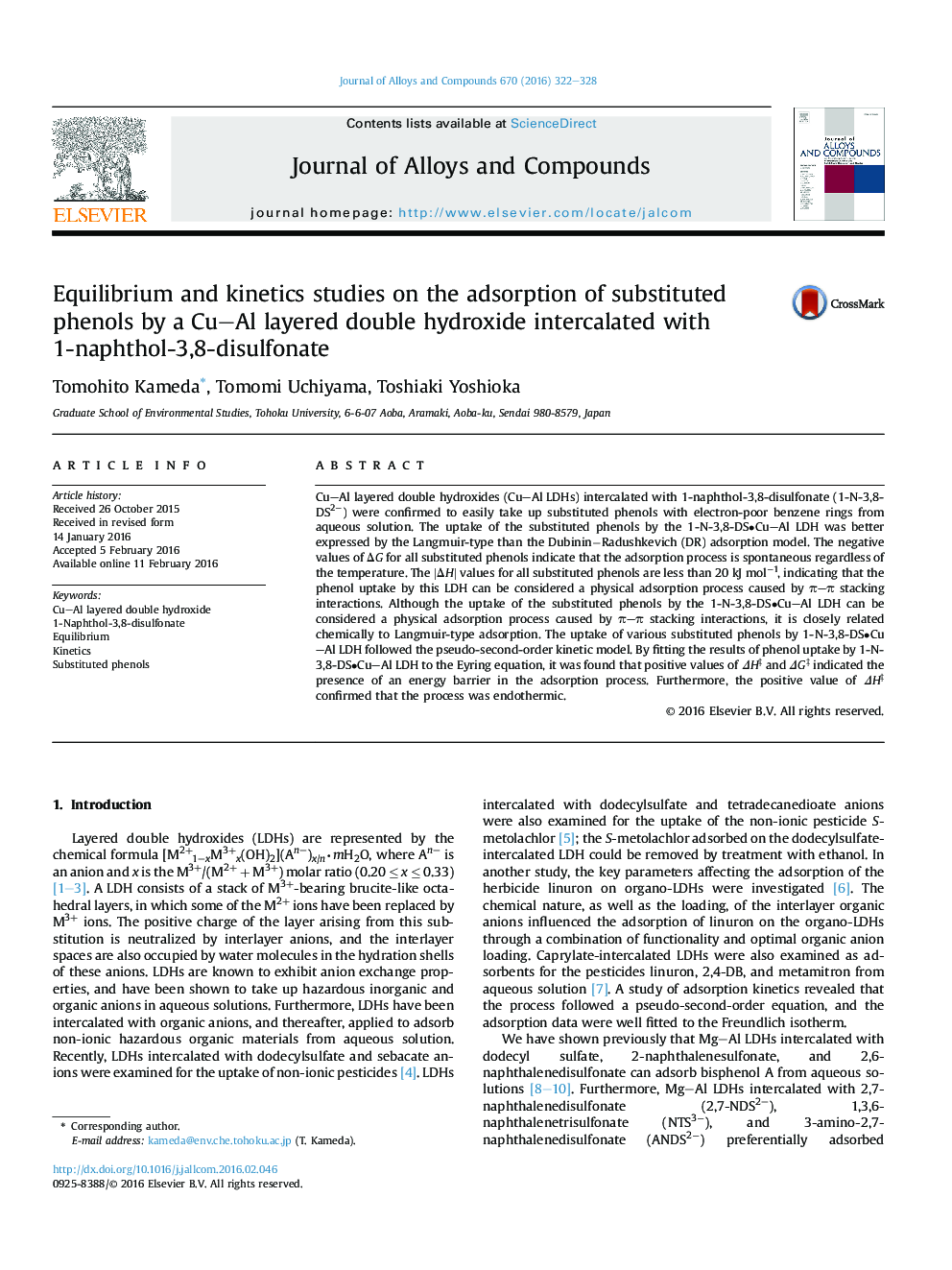| Article ID | Journal | Published Year | Pages | File Type |
|---|---|---|---|---|
| 1606311 | Journal of Alloys and Compounds | 2016 | 7 Pages |
•The uptake of the substituted phenols was better expressed by the Langmuir-type.•The uptake can be considered a physical adsorption process caused by π–π stacking interactions.•The uptake followed the pseudo-second-order kinetic model.
Cu–Al layered double hydroxides (Cu–Al LDHs) intercalated with 1-naphthol-3,8-disulfonate (1-N-3,8-DS2−) were confirmed to easily take up substituted phenols with electron-poor benzene rings from aqueous solution. The uptake of the substituted phenols by the 1-N-3,8-DS•Cu–Al LDH was better expressed by the Langmuir-type than the Dubinin−Radushkevich (DR) adsorption model. The negative values of ΔG for all substituted phenols indicate that the adsorption process is spontaneous regardless of the temperature. The |ΔH| values for all substituted phenols are less than 20 kJ mol−1, indicating that the phenol uptake by this LDH can be considered a physical adsorption process caused by π–π stacking interactions. Although the uptake of the substituted phenols by the 1-N-3,8-DS•Cu–Al LDH can be considered a physical adsorption process caused by π–π stacking interactions, it is closely related chemically to Langmuir-type adsorption. The uptake of various substituted phenols by 1-N-3,8-DS•Cu–Al LDH followed the pseudo-second-order kinetic model. By fitting the results of phenol uptake by 1-N-3,8-DS•Cu–Al LDH to the Eyring equation, it was found that positive values of ΔH‡ and ΔG‡ indicated the presence of an energy barrier in the adsorption process. Furthermore, the positive value of ΔH‡ confirmed that the process was endothermic.
